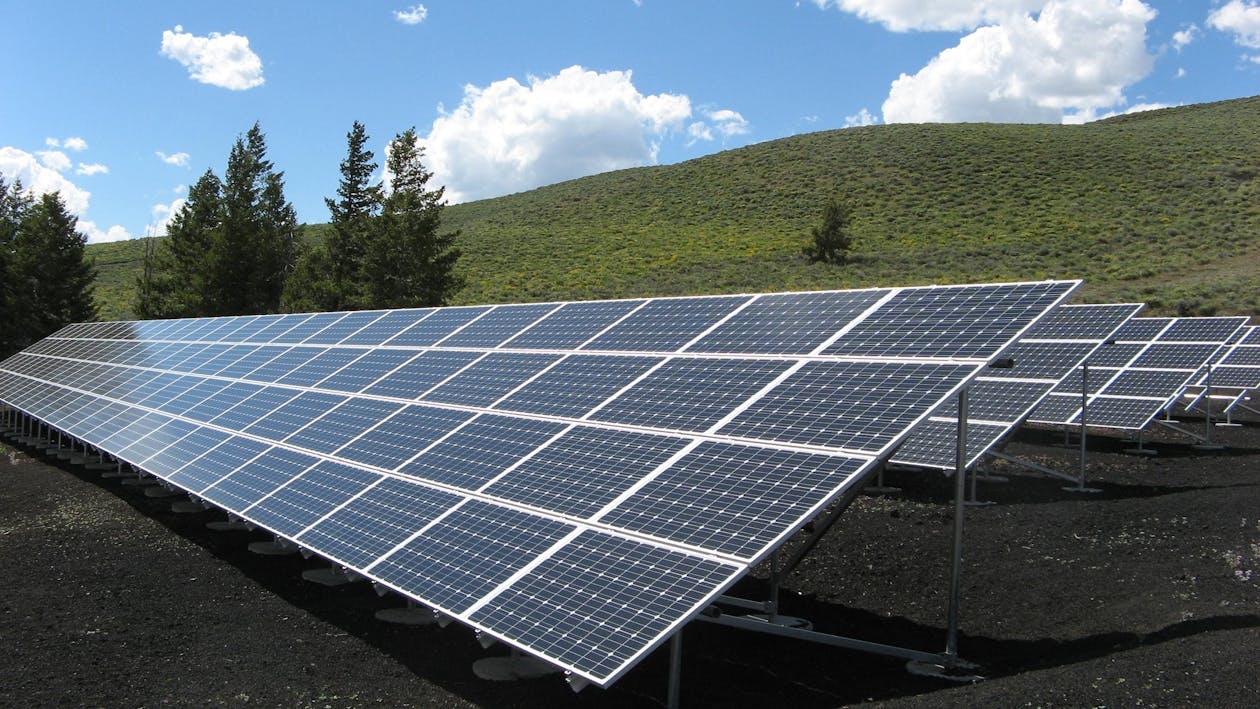Bluetti Apex 300 Review: 3840W of Power Unleashed
Welcome to our deep dive into the latest powerhouse from Bluetti. Having explored their products in the past, I was excited to get my hands on the new Apex 300. This unit isn't just an iteration; it's a significant leap forward, packing impressive stats and capabilities into a single, robust package. This post is a comprehensive Bluetti Apex 300 + B300K & DC Hub1 Hands-on 3840W Of Power review, covering everything from unboxing to real-world stress tests. Let's see what this beast can do!

Table of Contents
Unboxing and First Impressions
The Apex 300 and B300K arrived impeccably packaged—double-boxed, shrink-wrapped, and secured to a small pallet. Bluetti ensures their hefty products arrive safe and sound. Inside the Apex 300 box, you'll find:
- The Apex 300 Power Station
- A user manual and warranty card
- AC charging cable
- DC car charging cable (Cigarette lighter to XT60)
- Grounding screw for the grounding cable
The unboxing experience feels premium and sets the stage for a high-quality product.
Design, Build Quality, and Ports
The Apex 300 features a rugged, durable shell made from ABS-style plastic. It feels solid and ready for demanding environments. The first thing you'll notice are the incredibly sturdy handles, which are essential given the unit's weight of nearly 37 kg (about 81.5 lbs). There's no flex here, which is exactly what you want.
Front Panel & Display
The front is dominated by a bright, clear, and easy-to-read screen that shows input/output wattage, battery percentage, and remaining runtime. You also have four 230V AC sockets (EU style in this review model), capable of a combined 3,840W output. Key controls include:
- Charging Mode Switch: Toggle between Silent, Auto, or Turbo for charging speed.
- AC On/Off Button: Controls the AC inverter.
- Eco Mode & Magic Button: A customizable switch you can configure in the app.
Side Panels & Connectivity
Each side houses two cooling fans protected by a removable dust filter—a thoughtful feature for longevity. The left side includes the AC input for its impressively fast charging, a circuit protector, and a grounding point. The right side is where the action is for expansion:
- PV Input: Up to 2,400W of solar input.
- Battery Expansion Port: For connecting the B300K batteries or the DC Hub.
Core Specifications at a Glance
This model is impressive on paper, boasting automotive-grade LiFePO4 (LFP) cells that are good for over 6,000 cycles—translating to roughly 17 years of reliable use.
| Feature | Specification |
|---|---|
| Capacity | 2,764 Wh |
| AC Output | 3,840W continuous |
| Solar Input (PV) | 2,400W Maximum |
| Battery Chemistry | LiFePO4 (LFP) |
| Cycle Life | 6,000+ Cycles |
| Charging Time (AC Turbo) | 0-80% in 50 mins, 100% in 70 mins |
| Weight | Approx. 37 kg / 81.5 lbs |
The Modular Ecosystem: B300K & DC Hub D1
Unlike the AC300, the Apex 300 has a built-in battery. However, its real strength lies in its expandability. You can connect additional units to reach a staggering 58 kWh of capacity and over 11 kW of power output.
B300K Expansion Battery
The B300K is a modular battery using the same high-quality LFP cells. It adds capacity and features its own power button, status LEDs, and a Type-A USB port. Crucially, it has two expansion ports, allowing you to daisy-chain batteries or use one port for the DC Hub.
Hub D1: The DC Powerhouse
A key difference with the Apex 300 is that DC ports are not on the main unit. Instead, they are on the optional Hub D1. This module plugs into a battery expansion port and provides:
- 2 x 100W USB-C Ports
- 1 x USB-A Port (15W total)
- 1 x Cigarette Lighter Port (DC Output)
- 1 x Anderson Port (12V/50A or 24V/25A)
Important Note: The Hub D1 uses one of the battery expansion ports. If you want to use both the Hub D1 and an expansion battery, you must connect the B300K to the Apex 300 first, and then plug the Hub D1 into the B300K's second expansion port.
Performance Under Pressure: Real-World Tests
Solar Charging Test
On a sunny balcony with a 400W solar panel, the Apex 300 performed admirably. I connected the panel using an optional PV to XT60 cable. In direct sunlight, the unit pulled in 336W, which is an excellent result for a 400W panel. The screen estimated a 9-hour charge time to full from its current state with just this single panel. With its 2400W solar input capacity, you can significantly speed this up with more panels.

EV Charging: Emergency Roadside Power
Can it charge an electric vehicle? Absolutely. This is a fantastic emergency feature. I connected my EV with the Apex 300 and a B300K expansion battery, both at 100%.
- Starting Point: Car at 70% battery, 350 km range.
- The Test: I set the car's charger to pull 3.5 kW, just under the unit's 3.84 kW limit. The Apex 300 handled this continuous high load for over an hour until it was depleted.
- The Result: The car's battery increased to 75%, and the range went up to 372 km. That's a 5% battery gain and an extra 22 km of range—more than enough to get you out of a tough spot and to the nearest charging station.

Overload, UPS, and Fan Noise Test
To test the Battery Management System (BMS), I tried to overload it. With an iron, kettle, and hairdryer running simultaneously, the load surged past 4,500W. The screen displayed "Surge Mode" for a few seconds before the overload protection kicked in safely, shutting off the AC output. A simple reset brought it back online. The system works perfectly.
The UPS (Uninterruptible Power Supply) function is instantaneous. I plugged in a desktop computer and other appliances, then yanked the main AC charging cable. There was no flicker, no hesitation, no power loss. It’s a reliable backup for sensitive electronics.
As for noise, the fans are quiet under light loads. However, on Turbo charging or under heavy discharge (like the 3.5 kW EV test), the fans ramp up and are definitely audible. It's not excessively loud, but you'll know it's working hard.
The Bluetti Smart App
The Bluetti app (available for iOS and Android) is fantastic. It connects via Bluetooth or Wi-Fi and provides a clean, informative dashboard. At a glance, you see input/output stats, battery percentage, and time remaining. You can remotely toggle the AC/DC outputs, set charging modes (Silent, Auto, Turbo), update firmware, and configure advanced settings like working modes (Self-Consumption, Time of Use, etc.). It’s one of the most intuitive and comprehensive power station apps I've used.
Pros, Cons, and Final Verdict
After extensive testing, the Bluetti Apex 300 proves to be a top-tier contender in the high-capacity power station market.
What I Liked
- Massive 3,840W power output
- Incredibly fast AC charging (70 mins to full)
- High-quality, long-lasting LFP battery cells
- Excellent expandability up to 58 kWh
- Flawless and instantaneous UPS function
- Powerful 2,400W solar input
- Well-designed and informative app
What Could Be Improved
- Very heavy (37 kg / 81.5 lbs) - trolley recommended
- No built-in DC ports; requires the optional Hub D1
- Fans can get loud under heavy load
Final Thoughts
The Bluetti Apex 300 is an absolute powerhouse. Its raw output, fast charging, and robust LFP battery technology make it ideal for RV owners, homeowners needing reliable backup, and tradespeople on job sites without power. The weight is a significant factor, but it's a trade-off for its immense capacity and power. If you need to run nearly any household appliance, charge an EV in a pinch, or build a serious off-grid power system, the Apex 300 is an outstanding choice.
Pricing: The Indiegogo launch price was around $1,200, with retail expected around $1,500. For the latest pricing, discounts, and availability, please check the official product links.
Frequently Asked Questions (FAQ)
What is the battery type in the Bluetti Apex 300?
It uses automotive-grade LiFePO4 (LFP) cells, known for their safety and long lifespan of over 6,000 charge cycles.
How fast can the Apex 300 be fully charged?
Using the AC Turbo charging mode, it can charge from 0-80% in just 50 minutes and to 100% in a remarkable 70 minutes.
Is the Bluetti Apex 300 portable?
While it has sturdy handles, it is very heavy at nearly 37 kg (81.5 lbs). It's more "movable" than truly portable. Bluetti offers an optional trolley, which is highly recommended for moving it around frequently.
Can I use the DC Hub and an expansion battery at the same time?
Yes. You need to connect the B300K expansion battery to the Apex 300 first. Then, you can plug the Hub D1 into the second expansion port on the B300K battery.
What is the maximum solar input for the Apex 300?
The main unit supports up to 2,400W of solar input. This can be expanded further with optional accessories for even larger solar arrays.
.jpg)
Comments
Post a Comment